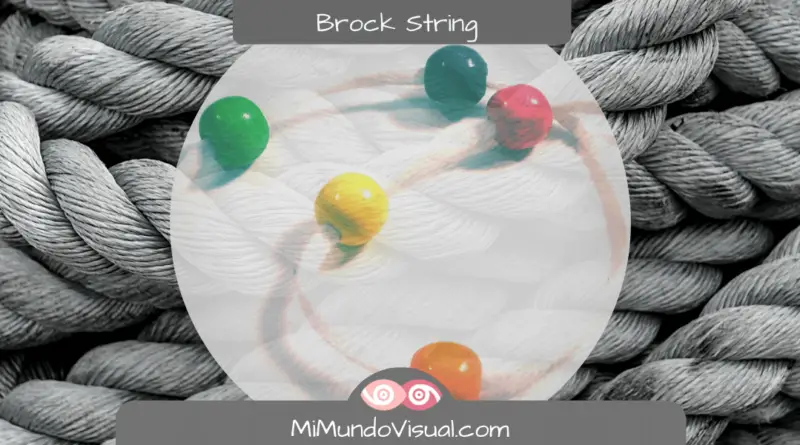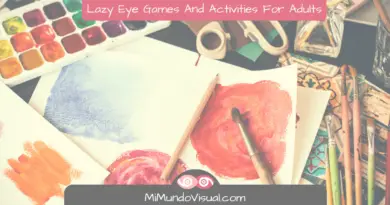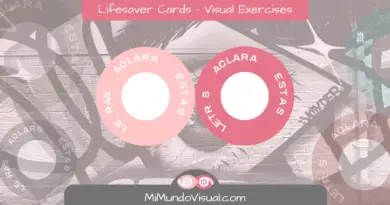Brock String – All You Need To Know!
Table Of Contents
Vision Therapy Exercises
- Eccentric Circles
- Lifesaver Cards For Convergence And Divergence
- Mazes as Vision Therapy Exercises!
- Brock String
- Marsden Ball
- 5 Activities To Do While Wearing An Eye Patch
- Lazy Eye – 5 Games And Activities For Adults
Download Our Lazy Eye Guide!

What is a Brock string?
A Brock string is a generally white rope with different colored wooden beads or balls. It is a versatile tool used in vision therapy to treat vergence disorders, like amblyopia and strabismus.
There are strings of various lengths (from 3 meters to 10 meters) with different beads. Usually, it is found with anything from 3 to 6 differently colored beads.
The exercises with Brock’s cord aim to teach to maintain good binocular coordination, eliminate suppression, and exercise vergence.
How to use a Brock String in Amblyopia Therapy?
We either stand or sit and hold on to one end of the rope at the height of our noses. The other end should be fixed to something like a doorknob, or we can ask someone else to hold it for us.
The string must be taut and at the height of our eyes. When getting started with the exercise, the beads are all placed at the far end of the string, except one of them, the one closest to us.
We will fix our gaze on that colored bead with both of our eyes. We should only see one ball but two strings since each one of the strings will be seen by each eye that crosses the ball, forming an X.

We see a ball in the center and two cords that meet in the center of the ball to form an X.
Thanks to using a Brock string, we can be self-aware of the physiological diplopia, aka double vision, and the position of our visual axes since we can appreciate when and where the eyes cross on the string.
If the two strings meet right at the center of the ball, forming the X, it means that our visual axes cross at that point. This is how we determine whether we have physiological diplopia or double vision.
TRY THIS: If we close or cover one of the eyes, we will notice how one of the two cords disappears, known as constant anti-suppression control.

We cover one eye, and one cord disappears.
We close or cover our left eye, and we will only see the string coming out of our right eye,
if we close or cover our right eye, we will see the string coming out of our left eye.
With this ability to perceive physiological diplopia ourselves, we are sure we are not suppressing it.
But what does it mean if the cords come together in front of or behind the ball?
This means that our eyes are not crossing where they should be, and we will have to work to make the crossing happen right at the ball, as our binocularity is not adequate.
If the two cords meet in front of the ball, we are talking about an endo (inward) position. Our eyes are too focused and too close. We have to relax the focus as our eyes are working too hard.
If, on the contrary, the two cords cross behind the ball, they have an Exo or outward position, which means that our eyes have to focus more. They are looking too far away.

The two strings cross in front of the ball (endo position), and the strings cross behind the ball (exo position).
In these cases, we can help ourselves by changing the position of the ball a little and pointing it out with a pencil, for example, or with the index finger. This allows us to teach our eyes to relax or tense up and achieve a situation where the ball crosses the two cords at that point.
In this particular case, we will try to look farther or closer than we are doing at the moment. We will touch the ball to be aware of its position and try to get the X right on the ball in the center. To achieve this, we train the visual axes with our oculomotor control.
Brock String Exercices
Exercises with one ball
To do this exercise, we will tighten the string and hold one of its ends in front of our noses. We will now place the first ball in front of our eyes. We can leave them at the other end, not use them.
The objective is the same as indicated above., Form an X with the ‘two cords’ right on the ball.

We see a ball in the center and two cords that meet in the center of the ball, forming an X.
Another exercise we can practice with one ball to work on convergence is to bring the ball closer to our nose until we see two balls and slowly move it away again until we see only one ball.
The objective here is getting closer to the ball each time without making it double.

We see one ball, and as it gets closer to our nose, we see two.
Exercise with several beads
We will select 3 of the balls of our string and fix our eyes on the ball in the center. First, we will focus and see only one ball in the center from which two crossed strings come out on the other end.

A purple ball is in the center, and two orange and two green balls are on the sides.
In our case, the ball in the center is lilac. This is the ball that we will see as a single ball. Ultimately, we have a green ball and an orange ball, of which we should see two of each.
That is, a purple ball in the center and two green balls, and two orange balls; at the same time,
We observe two cross strings forming an X in the center ball (in the purple ball).
Next, we will jump to the green ball, the first ball we find in front of our noses. In this case, we have to see one green ball and two lilac balls, and two orange balls while having the two cords crossing on the green ball. The joint result will be an inverted V.

One green ball and two orange and lilac balls, respectively, behind it.
Finally, we will focus on the ball farthest from our nose. In our example, this is the orange ball, and the strings should form an X at the center before the orange ball again.
All of this should result in forming this set being a V.

An orange ball at the bottom and two lilac and green balls in front of it.
Why is a Brock string important in vision therapy?
The Brock string is an excellent tool to use in vision therapy because it allows us to receive feedback at all times. Not only can we evaluate our current ability to coordinate our eyes, but we also get constant feedback on the improvement of our ability.
In other words, a Brock string helps us to work on suppression, we can observe physiological diplopia at different distances, we develop vergence and oculomotor skills, and we achieve improvements in both exophoria and endophoria.
In the following video, Susan Barry explains her case, and around minute 6:20, she teaches us how to use a Brock string:
History of a Brock String
The name comes from its inventor, optometrist Frederick W. Brock (1988-1971), who designed it to work on strabismus and gain stereopsis. In addition to the Brock string, he invented other tools for vision therapy. Dr. Frederick W. Brock was born in Switzerland in 1899 and moved to the United States in 1921 to work at the Colombia School of Optometry.
As noted by neuroscientist Susan Barry in her article The Work & Wisdom of Dr. Frederick W. Brock, the main objective is summarized as: ‘to teach the ability of binocular posture, to point with both eyes simultaneously at the same point in space’ as Dr. Brock himself indicated in his notes, in order to stop ‘strabismic thinking’.
According to Brock, ‘it is the nature of the posture that determines the nature of the responses,’ indicating that if the eyes are in a strabic posture, the individual will think strabically, however, once his eyes are in a normal posture, he will stop thinking strabically. Therefore, as he indicates, what should be taught is binocular posture.
At the same time, as Barry points out in his article, Brock reminds us that vision therapy must be treated from a holistic perspective of the individual, adapting to their usual environment and not from an approach in which the complex is broken down into small parts to work on it, such as looking at simple images through a stereoscope, according to the usual trend generally adopted by science.
It is easier to rely on images that we see every day, even if they are more complex, because they are the ones we are used to seeing, and they are real. And not some simpler images that strangely appear in our world normally.
How to make a Brock string
Making a Brock string is very simple. We only need a rope several meters long, preferably white, and several wooden balls/ beads of different colors with a hole in the center that goes through them (we can also find a ‘Brock String’ for sale online.
More About Amblyopia or Lazy Eye
- How Do I Know If I Have A Lazy Eye?
- What Causes Amblyopia Or Lazy Eye?
- How To Detect A Lazy Eye?
- What is Amblyopia?
- 6 Eye Patch Therapy Inconveniences We Are Not Told About
- How To Choose The Best Eye Patch For My Child?
- Contact Lenses For Children With Lazy Eye!
- 5 Questions About Lazy Eye In Adults!
- Lazy Eye In Adults – Little Everyday Difficulties That May Be Due To Amblyopia!




